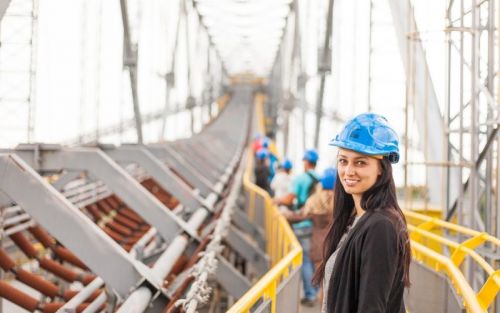
In today’s fast-paced business world, the partnership between artificial intelligence (AI) and the construction industry is changing the game.
It’s like a powerful duo changing construction companies’ operations, making things more efficient, and bringing in new ideas.
One exciting aspect of this collaboration is how it’s supercharging the use of business software.
Think of it as an intelligent assistant for construction projects. This partnership doesn’t just make things easier; it takes them to a new level.
Business software, such as enterprise software, comes at the forefront of this innovation.
Let’s dive in and discover the exciting possibilities at the intersection of AI and construction, where work meets innovation.
Challenges in Traditional Software Deployment
Traditional software may struggle to keep pace with the evolving needs of the construction industry, leading to limitations in functionality. The software development process is getting quicker than ever.
In scenarios where outdated systems cannot integrate with newer technologies, there is a risk of inefficiencies and compatibility issues.
As construction projects grow in both complexity and scale, traditional software may face challenges in adapting to increased demands.
Scalability issues can hinder the software’s ability to handle larger datasets, accommodate more users, and support the expanding requirements of a growing project.
Transitioning to new software can encounter resistance from users accustomed to older systems, leading to slower adoption rates.
The learning curve associated with traditional software upgrades can impact productivity during the initial stages of implementation.
The construction industry is dynamic, with evolving technologies, methodologies, and project requirements.
Innovative software solutions, including those integrating AI and advanced analytics, allow construction companies to adapt to changes swiftly and stay competitive in the market.
Embracing innovation in software is crucial for future-proofing construction workflows against upcoming challenges and opportunities.
Continuous innovation ensures that construction projects are equipped with the latest AI tools and capabilities, fostering a forward-looking and adaptable approach.
Innovative solutions often improve efficiency, refine workflows, and improve productivity.
By incorporating cutting-edge technologies, construction companies can achieve faster project delivery, reduced costs, and improved overall project outcomes.
Efficient deployment of enterprise software is crucial to ensure a smooth integration into an organization’s existing infrastructure.
Here are steps to deploy enterprise software efficiently:
Thorough Planning
Start with a comprehensive planning phase. Define clear objectives, identify key stakeholders, and create a detailed project plan outlining tasks, timelines, and milestones.
Assessment of System Requirements
Understand the system requirements of the enterprise software. Ensure that the organization’s infrastructure meets these requirements, and if not, plan for necessary upgrades or adjustments.
Data Migration Strategy
Develop a data migration strategy to transfer existing data to the new software seamlessly. Verify data accuracy and completeness to avoid issues during and after deployment.
Pilot Testing
Conduct a pilot test or a small-scale deployment in a controlled environment. This allows for identifying potential issues, ensuring compatibility, and obtaining feedback from a select group of users.
User Training
Provide comprehensive training to end-users on how to use the new software. This includes both technical training and guidance on how the software aligns with their daily workflows.
Parallel Run
Consider running the new software in parallel with the existing system for a certain period. This helps in identifying any discrepancies, allows users to become familiar with the new system gradually, and provides a safety net in case of unexpected issues.
Change Management
Implement effective change management strategies to address resistance to change. Communicate the benefits of the new software, involve key stakeholders, and provide support to users during the transition.
Monitoring and Testing
Continuously monitor the software’s performance during deployment. Conduct regular testing to identify and address any bugs, glitches, or performance issues promptly.
Incremental Deployment
Consider an incremental deployment strategy, where the software is rolled out in phases rather than all at once. This approach minimizes disruptions and allows for focused attention on specific functionalities.
Post-Deployment Support
Provide ongoing support after the initial deployment. Establish a support system to address user queries, troubleshoot issues, and incorporate feedback for continuous improvement.
Performance Optimization
Fine-tune the software for optimal performance based on usage patterns and feedback. This may involve adjusting configurations, addressing bottlenecks, and optimizing resources.
Documentation
Ensure comprehensive documentation is available for both users and IT administrators. This documentation should include user guides, system configurations, troubleshooting procedures, and any customization details.
After integrating enterprise software into your system, deploying machine learning models becomes the next step in accelerating construction processes. AI can help in strengthening the software capabilities through:
AI enables predictive analytics, forecasting potential issues in construction projects before they arise.
Analyzing historical data allows AI to predict trends, delays, or resource shortages, allowing for proactive decision-making and risk mitigation.
AI-driven systems provide automated decision support by processing vast datasets to offer insights.
Construction professionals can make informed decisions more quickly, relying on AI algorithms to analyze complex scenarios and recommend optimal courses of action.
AI optimizes software deployment by introducing intelligent automation, automating routine and repetitive tasks.
This allows project teams to focus on higher-value activities, reducing manual workload and increasing overall operational efficiency.
AI-driven software can adapt and learn from user interactions, continuously improving its functionality and user experience.
As users engage with the software, it becomes more attuned to their preferences, leading to a personalized and efficient working environment.
AI algorithms optimize project schedules by considering various factors such as weather conditions, resource availability, and historical project data. This results in more accurate and efficient scheduling, reducing delays and improving overall project timelines.
MobiClocks®️, for instance, an innovative AI-driven timekeeping application, revolutionizes construction project scheduling through seamless integration with enterprise software.
Construction teams can efficiently manage employees’ working hours through the MobiClocks®️ app, providing real-time data on labor availability and distribution across different tasks.
AI can analyze data to identify potential risks in construction projects, from safety concerns to equipment malfunctions.
Predictive maintenance algorithms can forecast when equipment is likely to fail, enabling proactive maintenance and minimizing downtime.
AI can optimize the construction supply chain by predicting material requirements, managing inventory levels, and identifying the most cost-effective suppliers.
This ensures a steady flow of materials, minimizes shortages and reduces unnecessary costs.
As explored in this discussion, the dynamic partnership between artificial intelligence and construction unveils a realm of possibilities for industry transformation.
From the powerful influence of AI on project management and resource allocation to the crucial role of innovative enterprise software, the construction landscape is evolving rapidly.
Real-world examples, such as MobiClocks®️, demonstrate how AI-driven solutions can revolutionize traditional practices, leading to refined project timelines, cost-efficient resource allocation, and optimized productivity.
As we navigate this intersection of AI and construction, embracing innovation and leveraging intelligent technologies becomes imperative for staying competitive in an ever-evolving industry.

There are a lot of ways to deal with no call, no show employees. The policies you enforce will depend on the type of manager you are.

Naturally, productivity and work ethics are positively and strongly correlated. There are many ways to set up a work environment where ethics are valued, and one of the most effective ways has proven to be guidance and empowerment. If you are ready to tak

Having an employee handbook is essential to the efficient operations of your business. In general, it contains all the procedures and policies that go on in your firm. It’s vital to have one, especially in construction companies, where logistics plays a h